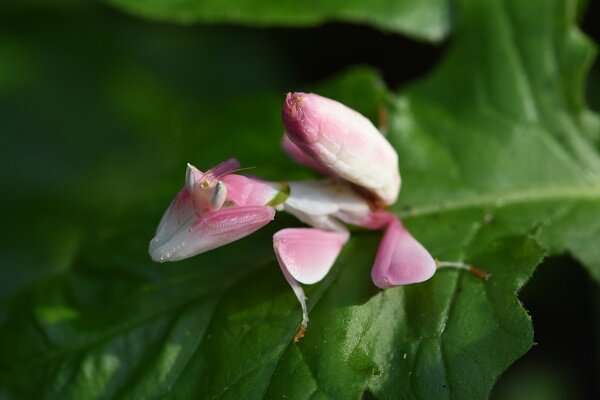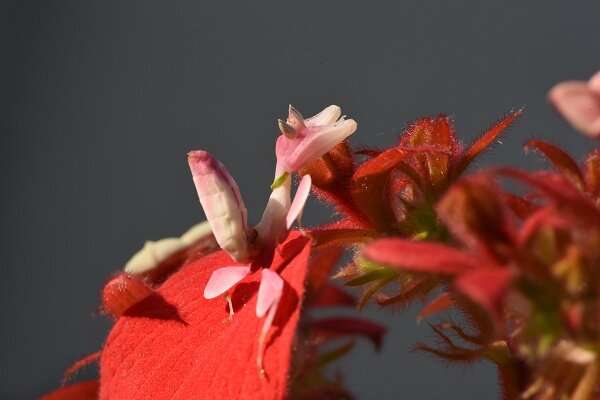How did the orchid mantis adapt and evolve?

Researchers from the Xishuangbanna Tropical Botanical Garden (XTBG) of the Chinese Academy of Sciences recently presented the first study systematically investigating basic biological traits of a classic conspicuous masquerader, the orchid mantis.
The study was featured as the cover story in Evolutionary Ecology.
Masquerade is a form of camouflage in which the masqueraders resemble inedible or inanimate objects to render themselves sensorily detectable but cognitively misclassified by predators and/or prey. Hymenopus coronatus, commonly known as the orchid mantis, is the only masquerader that resembles an entire blooming flower, making it an excellent model of conspicuous masquerade.
In this study, the researchers examined the biological features of the orchid mantis, including its field abundance, life cycle, microhabitats, color morph diversity and the key environmental factors that may affect its life cycle, and then recorded its indoor life history and color morph flexibility.
Both the field and the indoor results showed that the orchid mantis exhibited diversity and flexibility of color morphs. “This suggests that different life stages may have different predator–prey interactions in orchid mantis, and the color morph ontogenetic variation may maximize its fitness,” said Chen Zhanqi of XTBG.

Furthermore, the orchid mantis did not coexist with a specific plant, suggesting that it was unlikely to resemble any specific flower, but was likely to masquerade as general flowers. It showed not only diverse color morphs but also remarkable body size variations among life stages, which also obviously increased its diversity.
In addition, the orchid mantis showed remarkable intersexual differences in body weight (heavier females), duration of development time (protandry) and lifespan (females lived longer), which could be evolutionary responses for reproductive success.
“Our study is the first to systematically investigate basic biological traits in a classic conspicuous masquerader. It may provide crucial information for ecologists and evolutionary biologists to interpret how conspicuous masqueraders adapt and evolve,” said Chen Zhanqi.
More information:
Xin Zhao et al, The orchid mantis exhibits high ontogenetic colouration variety and intersexual life history differences, Evolutionary Ecology (2023). DOI: 10.1007/s10682-023-10230-y
Citation:
How did the orchid mantis adapt and evolve? (2023, March 29)
retrieved 29 March 2023
from https://phys.org/news/2023-03-orchid-mantis-evolve.html
This document is subject to copyright. Apart from any fair dealing for the purpose of private study or research, no
part may be reproduced without the written permission. The content is provided for information purposes only.
For all the latest Science News Click Here
For the latest news and updates, follow us on Google News.

